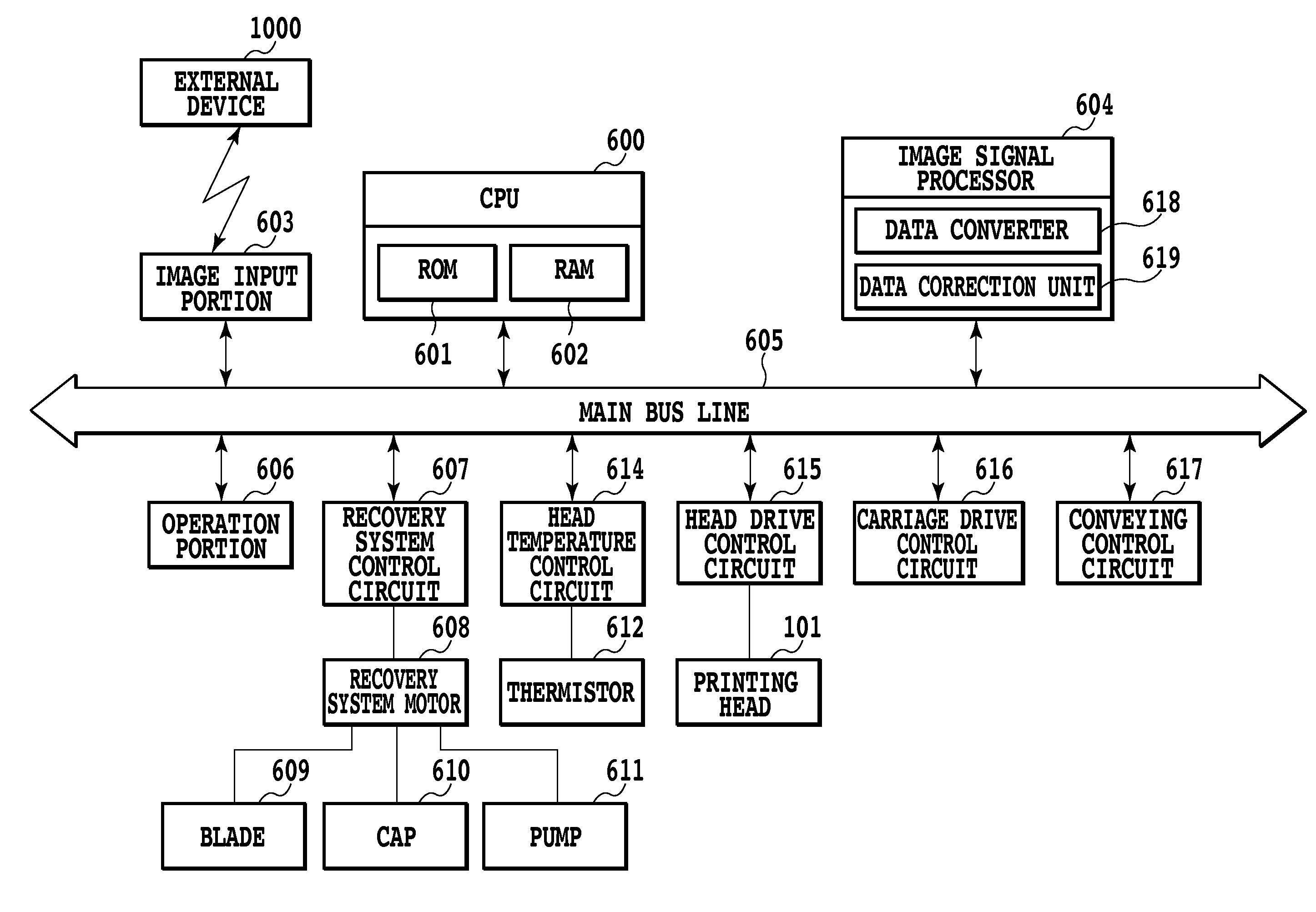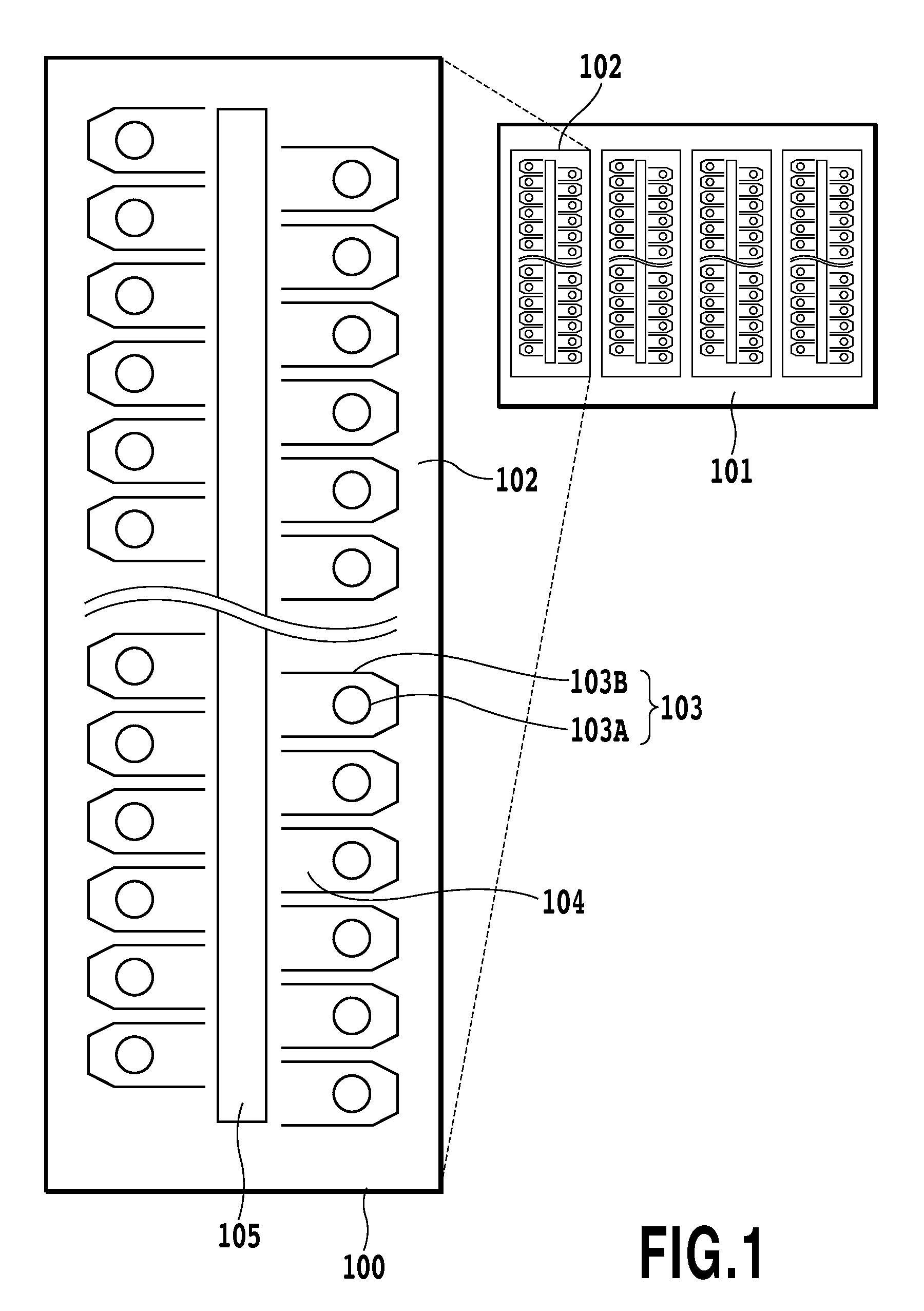Ink jet recording method and ink jet recording device
a recording device and inkjet printing technology, applied in the field of inkjet printing methods and inkjet printing apparatuses, can solve the problems of large amount of ink, difficulty in practice, uneven density, etc., and achieve the effects of reducing density unevenness, high speed, and increasing the amount of ejection
- Summary
- Abstract
- Description
- Claims
- Application Information
AI Technical Summary
Benefits of technology
Problems solved by technology
Method used
Image
Examples
first embodiment
2.1 First Embodiment
[0106]FIG. 9 is a schematic view for explaining concepts of count areas, gradation values on each of which represented by pixel data are counted, and of printing areas, the number of printed dots on each of which is changed. In FIG. 9, for the sake of simplicity of description, printing areas are each assumed to have the same size as count areas.
[0107]As shown in FIG. 10, in this embodiment, for example, in the case where printing is performed on the whole printing area which is equivalent to one page of printing media in l=L, times of main scanning, inputted image data corresponding to print data for a single main scanning of an ejection portion are divided in a first scanning as follows. Specifically, input image data corresponding to data for (Number of nozzles)×(Number of dots on one line in the main scanning direction) are divided into N pieces (N=1 in FIG. 10) of count areas and printing areas in the longitudinal direction (nozzle arrangement direction), an...
second embodiment
3. Second Embodiment
[0149]A second embodiment of the present invention is described below. Incidentally, in this second embodiment, a basic configuration of a printing apparatus, a printing head, and a control system, and a printing mode are the same as those of the first embodiment. Further, in this embodiment, also, a relationship between temperature of a printing head and an ejection amount is as shown in the curve B of FIG. 8, and further, the printing head used in this embodiment has a characteristic that an increase in ejection amount is large with an increase in the temperature of a head compared with the increase in ejection amount in the first embodiment.
[0150]In this embodiment, as in the first embodiment, the method is used in which a total number of dots of image data, the data printing changes in the ejection amount, is changed, and also for the correction method of image data, the method in which multivalued data are changed is used. However, unlike the first embodimen...
example 1
4.1 Example 1
[0183]To Example 1, the same configurations as those of the foregoing printing apparatus (FIG. 2), printing head (FIG. 1), and control system (FIG. 6) are applied, and for the printing mode also, the one-pass printing mode is applied. In a case of using a printing head having an ejection portion provided with 256 nozzles arranged at a 1200 dpi (approximately 21.2 μm) pitch, printing with a printing swath of 256 / 1200 inches (approximately 5.42 mm) can be performed on a printing medium in a single main scanning. Further, in the one-pass printing mode, printing medium conveying (sub-scanning) is performed by an amount corresponding to the printing swath.
[0184]The printing head is one driven so that 3.0±0.5 pl of ink is ejected through each nozzle. For ink containing color material, a commercially available ink for an inkjet printer PIXSUS 860i (manufactured by Canon Inc.) was used. For a printing medium, A4 size glossy paper (Pro Photo Paper: PR-101 manufactured by Canon I...
PUM
 Login to View More
Login to View More Abstract
Description
Claims
Application Information
 Login to View More
Login to View More - R&D
- Intellectual Property
- Life Sciences
- Materials
- Tech Scout
- Unparalleled Data Quality
- Higher Quality Content
- 60% Fewer Hallucinations
Browse by: Latest US Patents, China's latest patents, Technical Efficacy Thesaurus, Application Domain, Technology Topic, Popular Technical Reports.
© 2025 PatSnap. All rights reserved.Legal|Privacy policy|Modern Slavery Act Transparency Statement|Sitemap|About US| Contact US: help@patsnap.com



